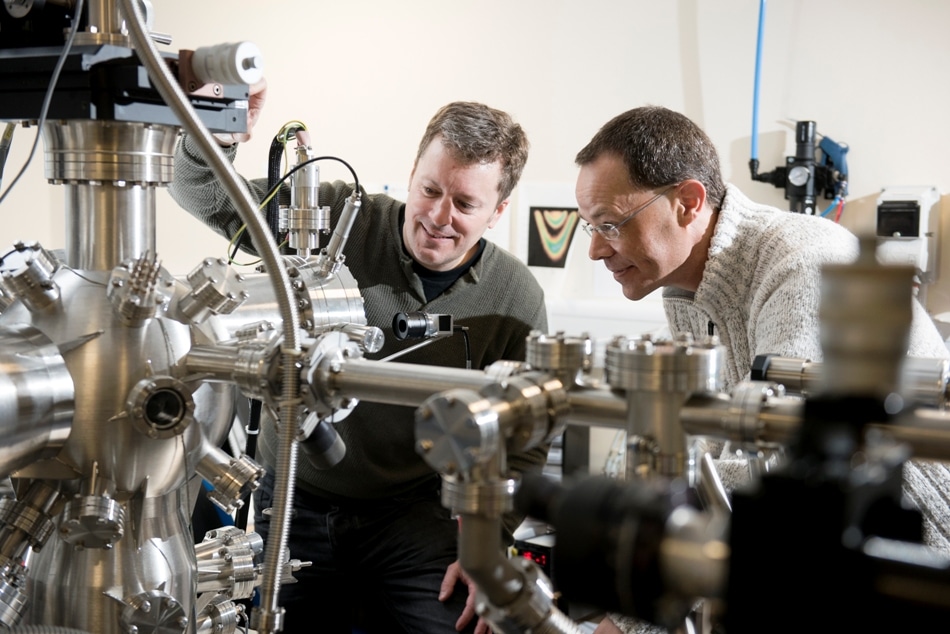Dec 8 2017
University of Warwick researchers have now invented a new ‘double-glazing’ solar power device, which unlike any of the currently available solar panels, opens up new opportunities that will help develop more enhanced photovoltaics.
 Dr Gavin Bell and Dr Yorck Ramachers in the laboratory. Credit: University of Warwick
Dr Gavin Bell and Dr Yorck Ramachers in the laboratory. Credit: University of Warwick
This exclusive approach, brought about by Dr Gavin Bell and Dr Yorck Ramachers from Warwick’s Department of Physics, makes use of gas instead of vacuum in order to transport electrical energy.
The device is fundamentally a thin double-glazed window. The outer pane conducts electricity and is transparent. The inner window has been coated with a special material, which behaves as a source of electrons under illumination by sunlight – this is known as a “photocathode”.
A safe inert gas, such as argon, separates the two panes - exactly as is found in superior quality double glazing windows.
Electrons are knocked out of the photocathode, when sunlight hits the device, and they then bounce via the gas to the outer pane without being lost or absorbed.
This is wholly different to how electrons behave in current solar panels, and opens up the possibility of refining solar power generation methods – while enhancements in classic photovoltaics are indeed hard to come by.
This is followed by collecting the electrons and pumping the electrical energy pumped into the grid. This can be performed through a gas-filled gap instead of a vacuum which would be far more cost-effective for any practical device.
Dr Bell and Dr Ramachers re-investigated concepts relating to the photoelectric effect dating back to Nikola Tesla and Albert Einstein when they reflected on whether these concepts could be used for contemporary solar power generation – resulting in the development of this new process.
It’s satisfying to find a new twist on ideas dating back to the start of the 20th century, and as a materials physicist it is fascinating to be looking for materials which would operate in an environment so different to standard photocathodes.
Dr Gavin Bell, from the University of Warwick’s Department of Physics.
The optimal material for the photosensitive layer is yet to be identified, and the researchers have projected a variety of candidate materials - including thin diamond films, which would be long-lasting and extremely robust.
The transparency of the photocathode could be diverse, and this could lead to the possibility of tinted windows producing solar power.
The researchers are would like the scientific community to think about prospective optimal materials:
We think the materials challenge is really critical here so we wanted to encourage the materials science community to get creative, our device is radically different from standard photovoltaics, and can even be adapted for other green technologies such as turning heat directly into electricity, so we hope this work will inspire new advances.
Dr Gavin Bell, from the University of Warwick’s Department of Physics.